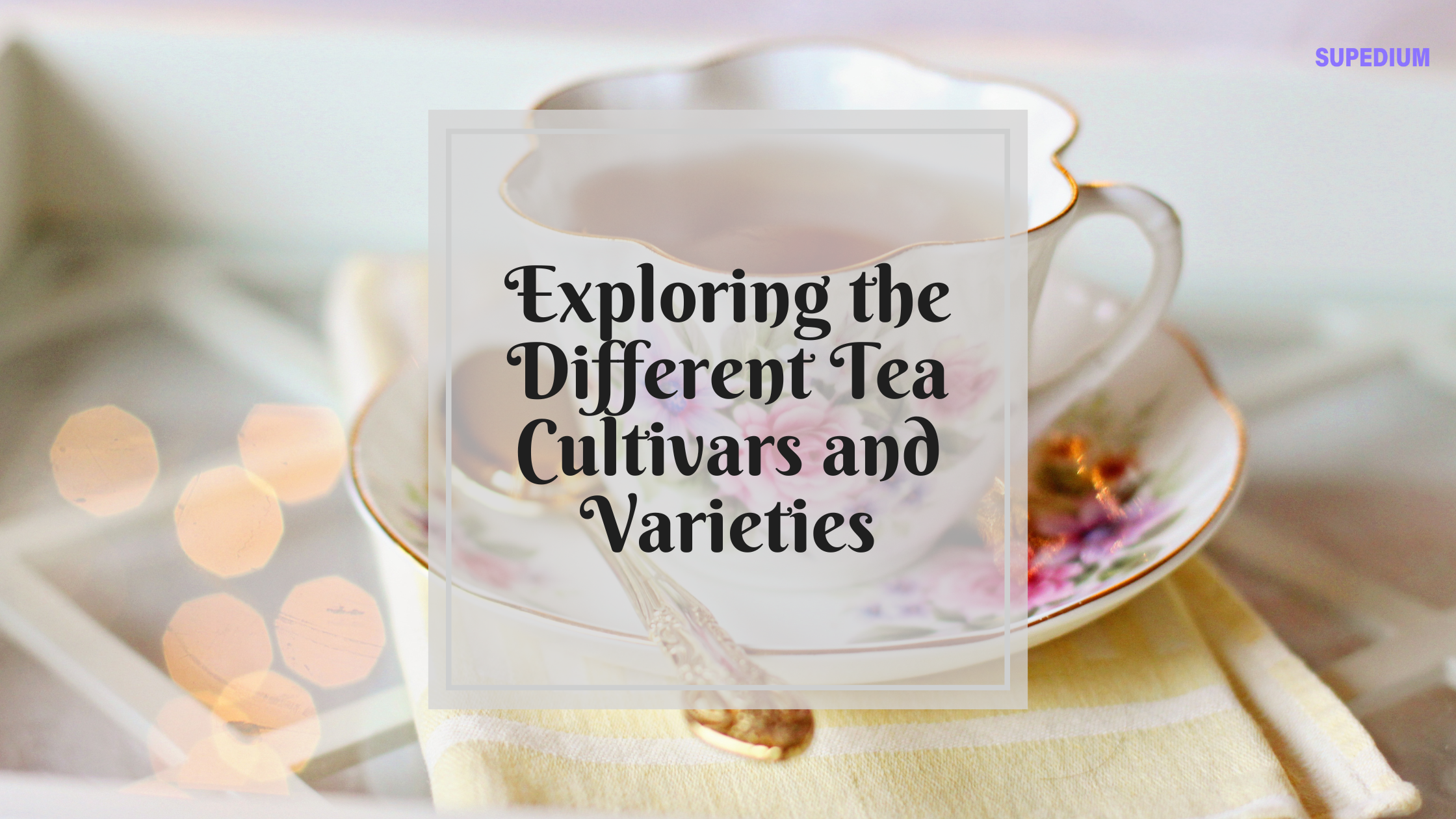Table of Contents
![]()
Tea, one of the most popular beverages globally, has an intricate world of cultivars and varieties, each contributing unique flavors, aromas, and characteristics. Understanding these nuances not only enhances appreciation but also informs choices for different uses and preferences. This article delves into the fascinating realm of tea cultivars and varieties, offering insights into their origins, characteristics, and the factors influencing their diverse profiles.
I. Introduction
Tea Cultivars and Varieties: Definitions and Importance
Tea cultivars refer to cultivated varieties of the tea plant, Camellia sinensis, which are selectively bred to enhance specific traits. Varieties, on the other hand, are classifications based on distinct characteristics. Understanding these distinctions is crucial as they significantly impact the flavor, aroma, and overall quality of tea. Additionally, this knowledge helps consumers and producers alike navigate the tea market more effectively.
II. Overview of Tea Types
Camellia sinensis – The Tea Plant
All true teas are derived from Camellia sinensis, a species native to East Asia. Within this species, there are primary variants that are the foundation for different tea types. The key varieties are:
- Camellia sinensis var. sinensis: Predominantly grown in China, known for its smaller leaves and more delicate flavor.
- Camellia sinensis var. assamica: Found mainly in India’s Assam region, characterized by larger leaves and a bolder flavor.
- Camellia sinensis var. Cambodian: Cultivated in Cambodia, it presents unique regional traits.
III. Major Tea Cultivars
Camellia sinensis var. sinensis
- Origin: China
- Characteristics: Small leaves with a delicate flavor. This variant is known for producing some of the most refined teas.
- Common Varieties:
- Longjing (Dragon Well): A renowned green tea with a sweet, chestnut-like flavor.
- Bi Luo Chun: Known for its fruity and floral notes.
- Bai Hao Yin Zhen: Also known as Silver Needle, it is a high-grade white tea with a delicate, sweet taste.
Camellia sinensis var. assamica
- Origin: Assam region, India
- Characteristics: Features larger leaves and a robust flavor, often described as malty and full-bodied.
- Common Varieties:
- Assam: Famous for its bold, brisk flavor, often used in blends.
- Manipur: Known for its slightly astringent, yet aromatic qualities.
Camellia sinensis var. Cambodian
- Origin: Cambodia
- Characteristics: While less widely known, Cambodian tea varieties have distinct regional attributes that contribute to their unique flavors.
IV. Types of Tea Based on Processing
Green Tea
- Characteristics: Minimally oxidized, maintaining a fresh and grassy flavor. Green tea is often praised for its health benefits and delicate taste.
- Common Varieties:
- Sencha: A popular Japanese green tea with a grassy, slightly sweet flavor.
- Matcha: A powdered green tea known for its rich, umami taste and vibrant green color.
- Gyokuro: A high-quality Japanese green tea with a sweet, umami-rich flavor.
Black Tea
- Characteristics: Fully oxidized, offering a bold, robust flavor. Black tea is the most commonly consumed type globally.
- Common Varieties:
- Darjeeling: Often referred to as the “Champagne of teas,” known for its muscatel flavor.
- Assam: Characterized by its strong, malty flavor.
- Earl Grey: Flavored with bergamot oil, offering a distinctive citrus aroma.
Oolong Tea
- Characteristics: Partially oxidized, providing a flavor profile that ranges between green and black tea. Oolong tea is celebrated for its complex flavors and aromatic qualities.
- Common Varieties:
- Tie Guan Yin: A highly esteemed Chinese oolong with floral and creamy notes.
- Da Hong Pao: Known for its rich, roasted flavor and historical significance.
White Tea
- Characteristics: Made from young leaves and buds, it is minimally processed, resulting in a delicate and light flavor.
- Common Varieties:
- Bai Mu Dan (White Peony): Features a light, floral taste with a subtle sweetness.
- Silver Needle: Known for its delicate flavor and high-quality buds.
Pu-erh Tea
- Characteristics: This tea is fermented and aged, offering a unique earthy flavor that develops over time.
- Common Varieties:
- Raw Pu-erh: Has a fresh, sometimes grassy taste when young, evolving to a more complex flavor with age.
- Ripe Pu-erh: Processed to accelerate aging, resulting in a smooth, mellow flavor.
V. Regional Cultivars and Their Characteristics
Chinese Tea Cultivars
- Anxi:
- Tie Guan Yin: A famous oolong tea known for its floral aroma and creamy texture.
- Baozhong: A lightly oxidized oolong with a floral and fruity taste.
- Yunnan:
- Pu-erh: Renowned for its aged teas with deep, earthy flavors.
- Dian Hong: Known for its malty sweetness and golden tips.
Indian Tea Cultivars
- Assam:
- Assam Black Tea: Bold and brisk, often used in breakfast blends.
- Assam Green Tea: Less common, with a lighter, vegetal flavor.
- Darjeeling:
- First Flush: Harvested in spring, offering a delicate, floral taste.
- Second Flush: Known for its muscatel flavor, harvested in summer.
Japanese Tea Cultivars
- Yabukita:
- Sencha: Dominant green tea in Japan, appreciated for its balanced flavor.
- Matcha: A premium green tea used in traditional Japanese tea ceremonies.
- Asanoka:
- Matcha: Renowned for its high quality and rich flavor, used in various Japanese sweets and beverages.
Taiwanese Tea Cultivars
- High Mountain Oolong:
- Alishan: Features a smooth, floral taste with a creamy texture.
- Jade Mountain: Known for its fresh, green taste and aromatic profile.
- Ruby Red:
- Red Jade Tea: Offers a unique sweet and spicy flavor, distinctive for its ruby-red liquor.
VI. Factors Influencing Tea Flavor and Quality
Soil and Climate
- Terroir: The geography, soil, and climate where tea is grown significantly impact its flavor. For instance, high-altitude teas often have more delicate flavors due to cooler temperatures and slower growth.
Processing Techniques
- Withering, Rolling, Oxidation, Drying: Each processing step influences the final flavor profile of the tea. For example, oxidation levels determine whether a tea will be green, black, or oolong.
Harvesting Time
- Buds vs. Mature Leaves: Teas made from young buds or early harvests generally have more refined flavors compared to those made from mature leaves.
VII. Tea Cultivar and Variety Selection for Different Purposes
Culinary Uses
- Pairing with Foods: Different tea varieties complement various dishes. For example, Darjeeling pairs well with light fare, while Assam’s robust flavor goes well with hearty meals.
- Incorporation into Recipes: Tea can be used as an ingredient in cooking and baking, adding unique flavors to dishes.
Medicinal and Wellness Uses
- Health Benefits: Specific cultivars are renowned for their health benefits. For instance, green tea is celebrated for its antioxidants, while Pu-erh is valued for its digestive benefits.
- Traditional Medicinal Uses: Many tea varieties have been used in traditional medicine for their purported health benefits.
Premium vs. Commercial Teas
- High-Quality vs. Mass-Produced Teas: Premium teas often have more nuanced flavors and higher quality, while mass-produced teas may be blended for consistency.
VIII. Conclusion
Tea cultivars and varieties offer a rich tapestry of flavors and characteristics, shaped by their origins, processing methods, and growing conditions. By understanding the differences among these teas, consumers can better appreciate the complexities of their choices and explore the diverse world of tea with greater insight. As the tea industry continues to evolve, staying informed about new developments and trends can enhance both the enjoyment and knowledge of this timeless beverage.
Share This





Be the first to comment